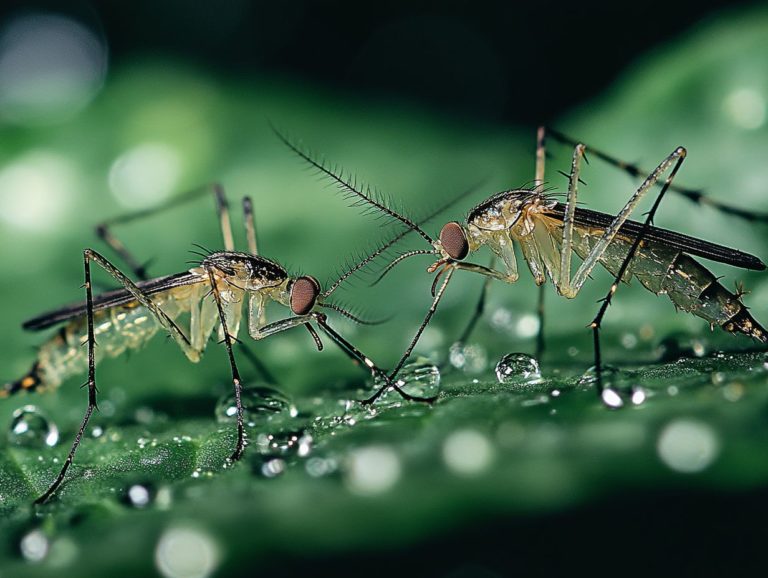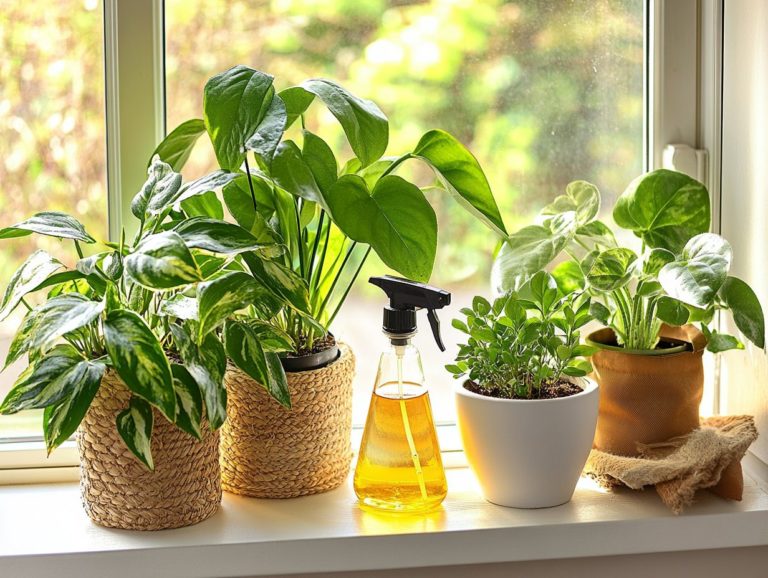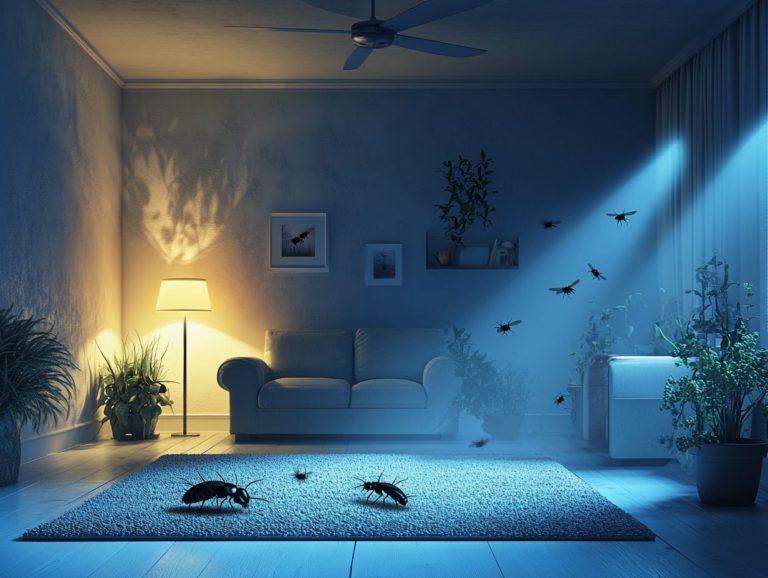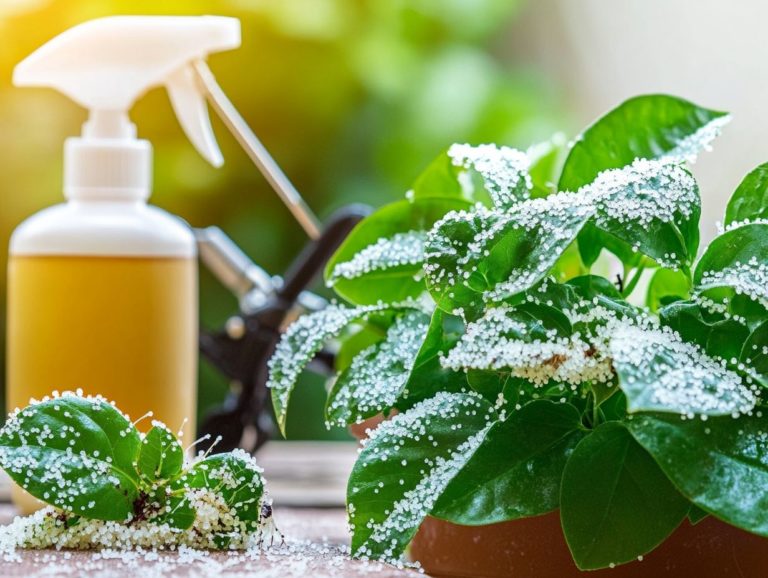Recognizing Bark Beetles on Indoor Plants
Bark beetles are tiny but powerful pests that can devastate your cherished indoor plants and outdoor trees. They can turn your beautiful greenery into a battleground.
For any plant enthusiast, understanding how these pests spread and recognizing the signs of an infestation is essential.
This guide provides a comprehensive look at visible damage indicators, effective preventive measures for plant care, and accurate identification and treatment methods.
You ll also uncover long-term strategies to keep these pesky beetles at bay, ensuring your plants not only survive but thrive in their environment.
Dive in to safeguard your green companions!
Contents
- Key Takeaways:
- Signs of Bark Beetle Infestation
- Preventing Bark Beetle Infestations
- Identifying and Treating Bark Beetles
- Dealing with Reoccurring Infestations
- Frequently Asked Questions
- 1. What are bark beetles and how can I recognize them on my indoor plants?
- 2. Are bark beetles harmful to my indoor plants?
- 3. How do bark beetles typically infest indoor plants?
- 4. What are some signs that my indoor plant is infested with bark beetles?
- 5. How can I prevent bark beetles from infesting my indoor plants?
- 6. What should I do if I find bark beetles on my indoor plants?
Key Takeaways:
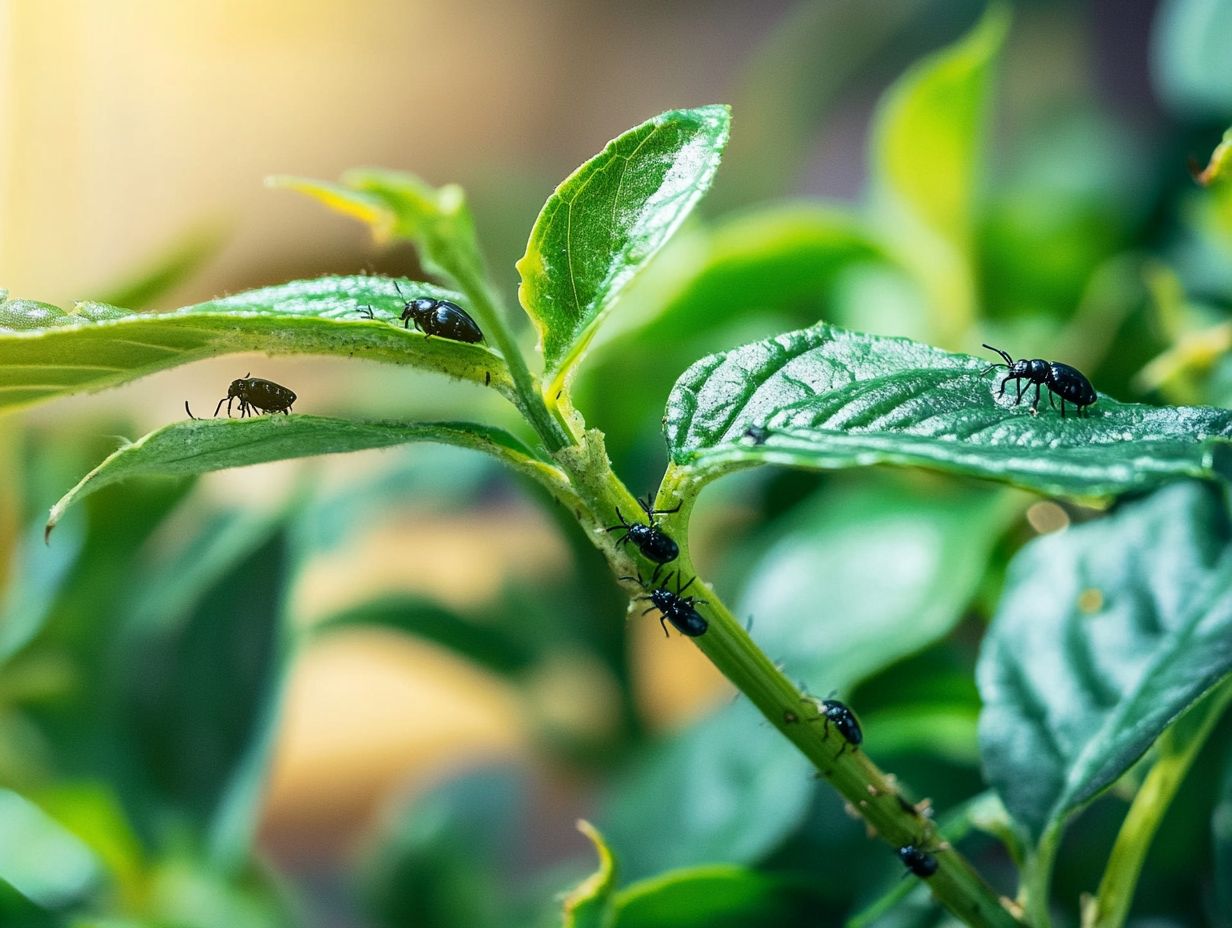
- Look for visible damage and indicators, such as holes and tunnels in plant bark, to identify bark beetle infestations.
- Regular inspection and pruning help prevent bark beetle infestations.
- If facing recurring infestations, consider long-term solutions like using natural predators to control bark beetles.
What are Bark Beetles and How Do They Spread?
Bark beetles are small, wood-boring insects that can wreak havoc on tree health, significantly impacting various plant species in urban and rural settings.
These pests reproduce quickly, especially when conditions are perfect like optimal humidity and high-quality wood. When trees are stressed, they release scents that attract bark beetles, paving the way for infestation.
As these beetles tunnel beneath the bark, they disrupt the system that carries water and nutrients in trees and introduce fungi that can further compromise plant health.
To combat this, effective pest management strategies, including integrated pest management techniques, focus on monitoring critical environmental factors and promoting the health of surrounding vegetation. They utilize biological controls to manage infestations, which is crucial for maintaining plant health and fostering a resilient ecosystem.
Signs of Bark Beetle Infestation
Recognizing the signs of bark beetle infestation is crucial for effective pest control and ensuring your plants remain healthy. Early detection dramatically enhances your chances of successful treatment and implementing prevention strategies.
Visible Damage to Plants and Trees
Visible damage caused by bark beetles can appear in various forms, such as wilting leaves, yellowing foliage, and premature leaf drop. These are clear signs that immediate action is essential.
You might also notice visible galleries or tunnels beneath the bark, indicating the beetles infestations as they feast on your plant’s vital tissues. Certain species, like pines and spruces, are particularly vulnerable; the beetles disrupt the flow of nutrients and water, leading to a decline in overall health.
Tiny exit holes on the bark can also signal their unwelcome presence. Act fast to protect your plants by promoting healthy growth through proper watering, fertilization, and regular monitoring. For more information, check out our guide on recognizing scale insects on indoor plants. This will help fend off these destructive pests and keep your greenery thriving.
Other Indicators of Infestation
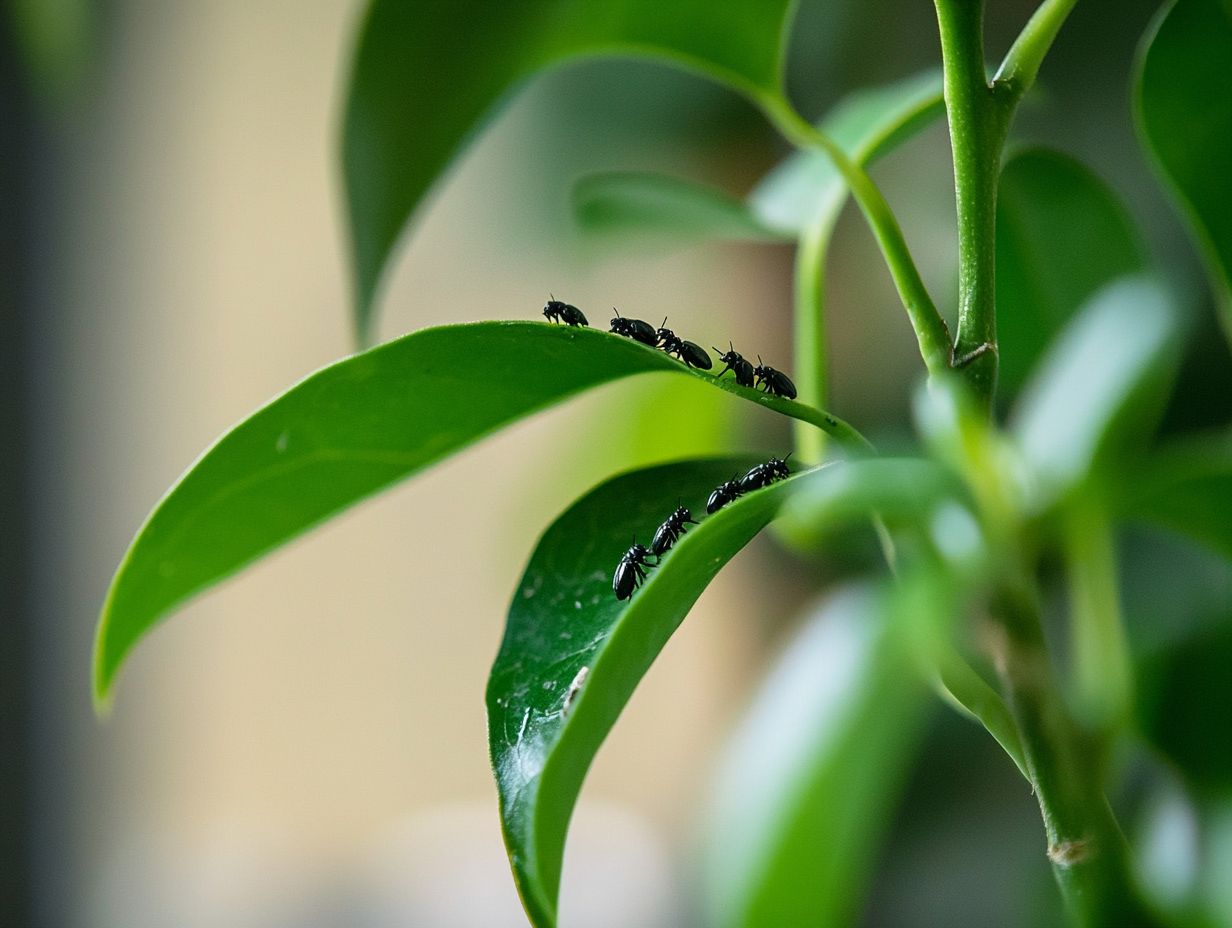
In addition to visible damage, several subtle indicators of bark beetle infestation require your attention. Look for tiny boreholes on the bark and the accumulation of frass those little wood shavings beneath the tree.
Another sign to watch for is the changing coloration of tree foliage. Affected trees often show yellowing leaves or experience premature needle drop, which are clear red flags. You might even notice an increase in woodpecker activity nearby; these birds are attracted to the larvae hiding beneath the bark, and their presence can be an early warning sign.
Keep an eye out for pitch tubes small masses of resin oozing from the tree that form distinctive structures, further indicating that beetles are at work. Recognizing these signs promptly is crucial for safeguarding the health of your trees and maintaining the overall beauty of your landscape.
Take action today to keep your plants safe!
Preventing Bark Beetle Infestations
Preventing bark beetle infestations is essential for preserving the health of your plants and trees, whether in your home garden or a community space. By taking proactive measures, you can drastically reduce the risk of a widespread outbreak and promote the sustainability of local ecosystems.
Best Practices for Plant Care and Maintenance
Implementing best practices for plant care and maintenance is crucial for preventing bark beetle infestations. Healthy, well-maintained plants are less susceptible to pest damage and disease.
Regular inspections are vital. Catching signs of trouble early prevents minor issues from escalating.
Maintaining soil health through organic amendments and proper watering techniques ensures that your plants are robust, promoting resilience against various stressors.
Incorporating beneficial insects, like ladybugs or predatory wasps, offers a natural method for managing pests without harmful chemicals. These integrated pest management strategies foster a balanced ecosystem, enhancing plant vitality and minimizing risks posed by bark beetles and other pests.
Identifying and Treating Bark Beetles
To effectively identify and treat bark beetles, a deep understanding of their biology and behavior is essential. This knowledge enables you to implement the right pest control strategies, mitigating damage and restoring plant health.
Methods for Identification and Removal

Effective methods include using sticky traps to monitor populations and thoroughly inspecting the bark and foliage for signs of pest activity.
These techniques are vital for you as a landowner or arborist. Early detection of infestations allows for timely intervention. Carefully examine trees for boreholes and frass fine wood dust to assess the severity of the problem.
Utilizing beneficial insects, such as parasitic wasps and nematodes, plays a key role in natural pest management. These allies prey on or infect bark beetles, making them essential to your pest control strategy. Fostering these partners within the ecosystem enhances your efforts, leading to healthier trees and a balanced environment.
Dealing with Reoccurring Infestations
Navigating the challenges of recurring bark beetle infestations can be daunting. Implementing long-term prevention strategies and effective treatment options greatly enhances the health of your plants and ensures the vibrancy of your garden.
Long-Term Solutions and Prevention Strategies
Long-term solutions and prevention strategies are essential for managing bark beetle populations and ensuring plant health over time.
Focus on approaches like selecting resistant tree species that can withstand pest pressure, reducing the likelihood of damage. Improving the health of your plants through proper watering, fertilization, and pruning will strengthen their defenses against pests.
Utilizing integrated pest management techniques, which include monitoring pest populations and promoting beneficial insects, further enhances plant resilience.
By combining these strategies, you can create a robust ecosystem that minimizes the impact of bark beetles while fostering a thriving plant community.
Frequently Asked Questions
1. What are bark beetles and how can I recognize them on my indoor plants?
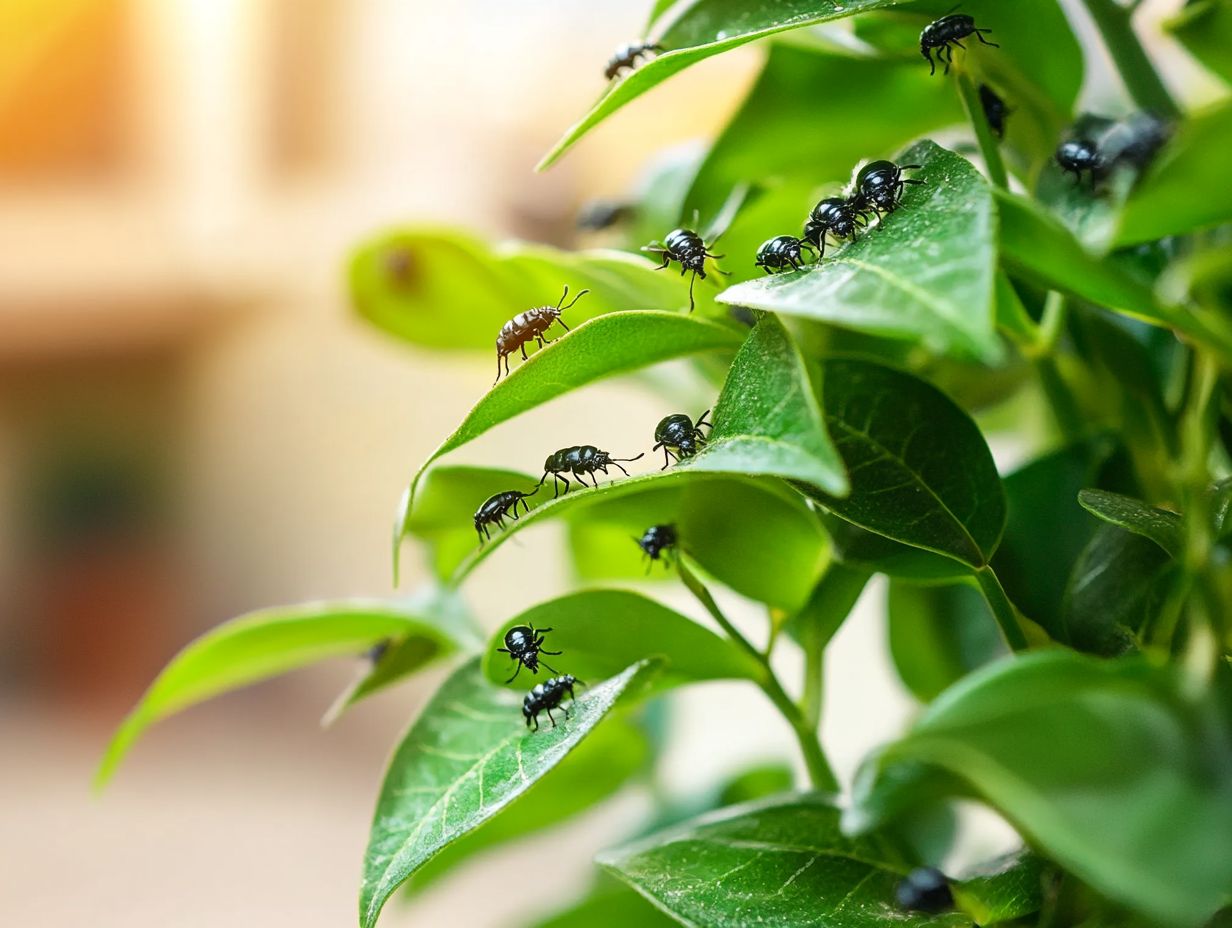
Bark beetles are insects that feed on the bark and wood of trees and plants. They can be recognized by their small size, dark brown or black color, and cylindrical shape. You may also notice small holes or tunnels in the bark of your indoor plants.
Start monitoring your plants today to ensure a beetle-free garden!
2. Are bark beetles harmful to my indoor plants?
Yes, bark beetles can seriously harm indoor plants. They feed on the bark and wood, weakening or even killing the plant over time.
3. How do bark beetles typically infest indoor plants?
Bark beetles often sneak into homes via contaminated soil or infested plants and firewood. They can also enter through cracks or openings in windows and doors.
4. What are some signs that my indoor plant is infested with bark beetles?
Look for beetles, sawdust-like material near the plant’s base, wilting leaves, or unexplained damage. A foul odor may also signal an infestation.
5. How can I prevent bark beetles from infesting my indoor plants?
Regularly inspect new plants before bringing them home. Keep your indoor plants healthy and well-watered because stressed plants attract pests.
Avoid bringing in firewood or outdoor plants without thorough inspection.
6. What should I do if I find bark beetles on my indoor plants?
If you find bark beetles, act fast to prevent further damage. Remove any infested plants and clean the area thoroughly to eliminate remaining beetles.
Consider consulting a pest control expert for additional help.

